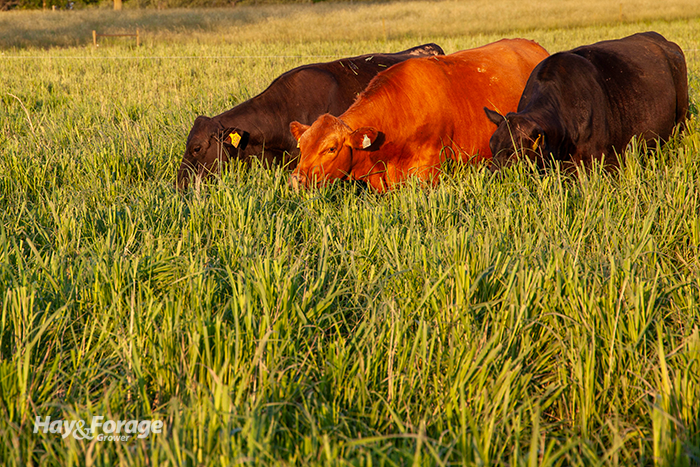
The use of native warm-season grasses such as the bluestems, indiangrass, and switchgrass in pasture systems is on the rise. Establishment of these grasses is often challenging, and failures are often common when some preplanning doesn’t occur.
“Native species are slow to establish and do not compete well with other plants, such as undesired weeds and forage mixes,” explain Kansas State University (KSU) agronomists in a recent edition of the university’s Agronomy eUpdates. “For this reason, native grass pastures can take up to four years to become fully established.”
The KSU agronomists recommend using known cultivars that have been selected for better establishment and forage production characteristics. Far ahead of seeding, consider the species and varieties that will best fit your needs, how the seedbed will be prepared, where you will get your seed, and the optimum seeding date. “Planning is the key to achieving a successful stand,” the agronomists assert. They recommend following these guidelines:
Preseeding: Assess resources, including soil type, fertility, current and past cropping uses, and how these factors might affect the establishment of a new native pasture. Consider the potential challenges such as existing weed problems and herbicide carryover. Ensure you have the correct equipment for seeding warm-season grasses, and that the seed you want is available.
Companies that sell certified seed are required to inform buyers of seed quality. This allows buyers to determine effective seeding rates. Native grass seed quality is measured on a pure-live-seed (PLS) basis, which is calculated based on germination and purity.
Soil characteristics: The first step in knowing the potential yield for haying or grazing is ensuring the soil is suitable for native grass establishment. Soil texture can be identified by a lab test or by searching soil survey maps (websoilsurvey.nrcs.usda.gov). Further, soil nutrient status needs to be determined.
“Previous cropping history, particularly herbicide use, is necessary to prevent seedling damage from herbicide carryover,” the agronomists note. “Seedling damage can result from long-residual herbicides, particularly those used for grass control. Short-residual herbicides are less likely to injure seedlings. Herbicides with rotation restrictions for corn or grain sorghum are an indication of potential seedling damage,” they add.
Seedbed preparation: Ensure a firm, weed-free seedbed. In most cases, clean-tilled seedbeds are preferred, especially where annual precipitation is greater than 32 inches.
Weed control is critical when establishing a stand of native grasses. Seedlings are slow to grow and not very competitive. Using a cultipacker or similar equipment before and/or after seeding can improve germination and emergence, especially if rainfall is lacking.
Seeding method: As with any forage seeding, proper seeding depth is important. Most seeds cannot emerge from deeper than 1/2 to 1 inch. Grass drills are best to meter the fluffy seed of most native grass species and ensure accurate placement.
Seeding date: Planting dates are dependent on location. “The optimum seeding date for warm-season grasses is about two weeks before the average last frost date and at least six weeks before hot, dry summer weather,” the KSU agronomists note. “If that is not possible, one month before to three weeks after the average last frost date may be an acceptable period for seeding.”
Fertilization: Often, fertilizer isn’t needed at the time of planting unless nutrient levels are low. Confirm soil nutrient status with a soil test. Lime is suggested if the pH is below 6. Over fertilizing may stimulate weed competition during the establishment phase.
For more specifics on establishing native warm-season grasses, consult this KSU extension publication.

